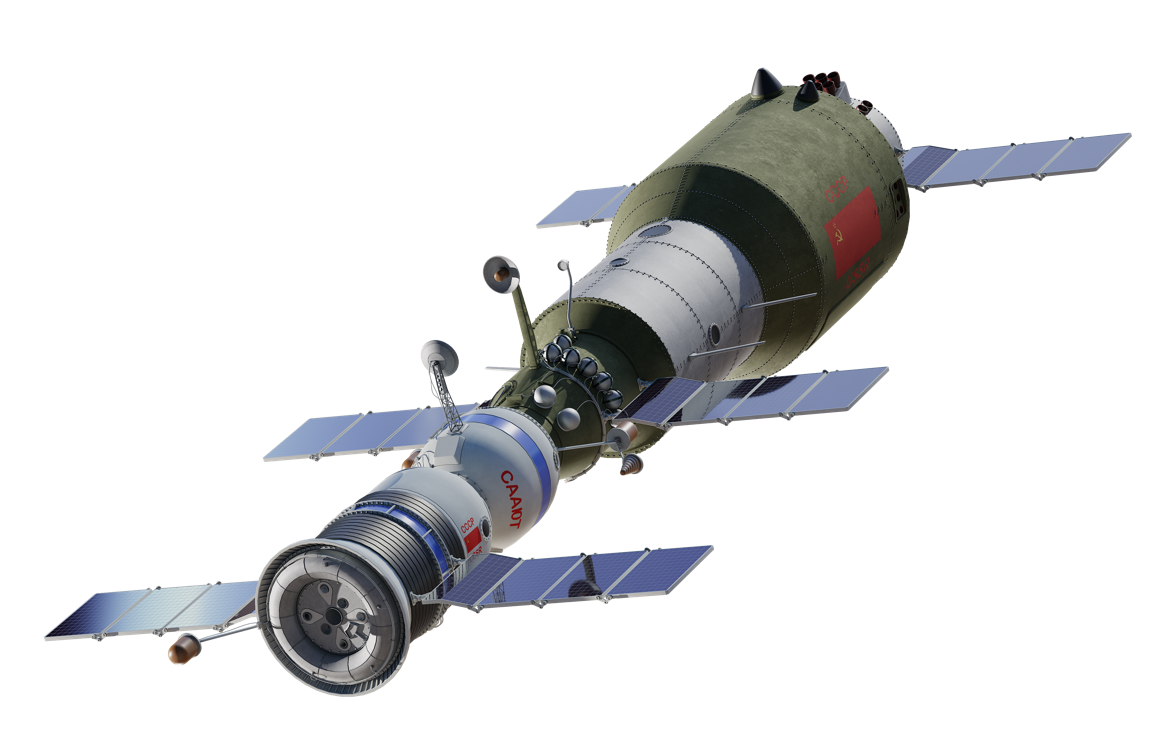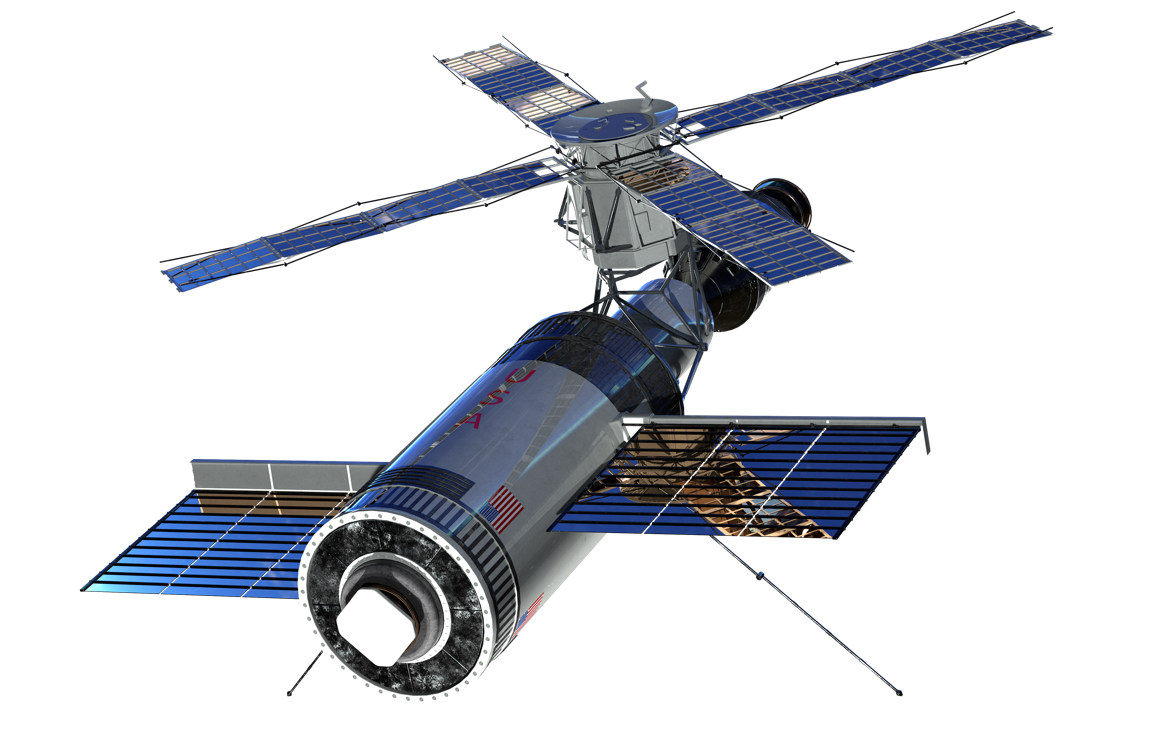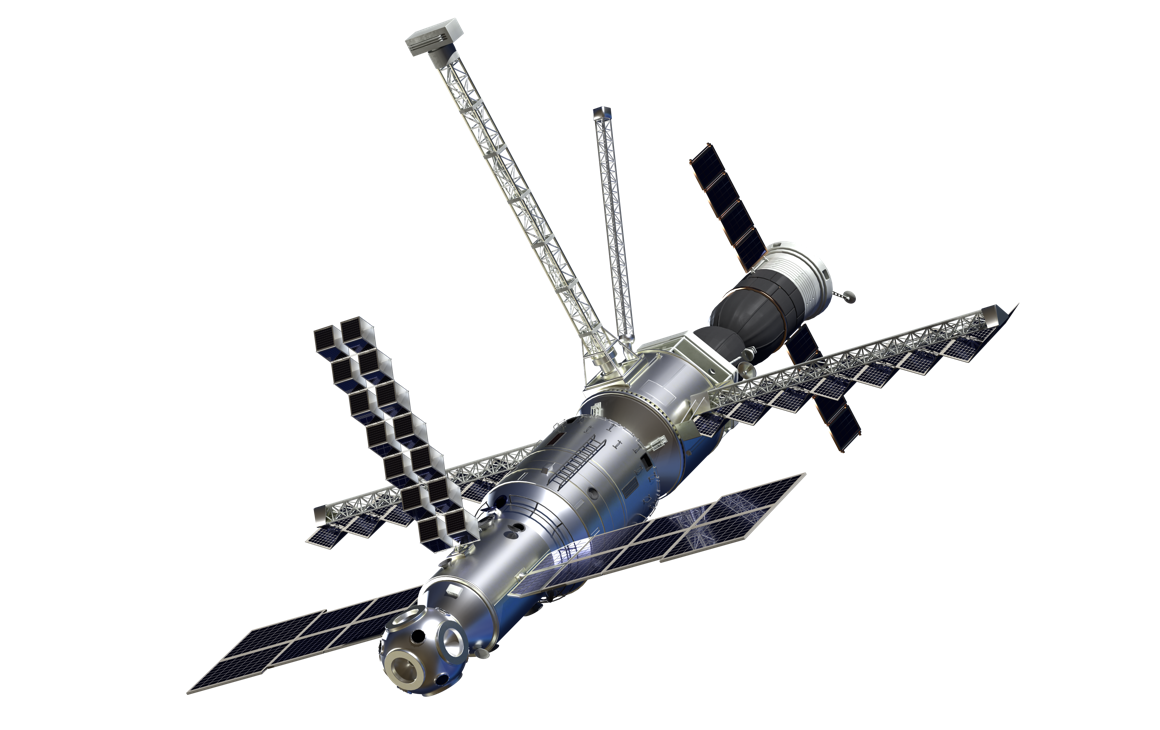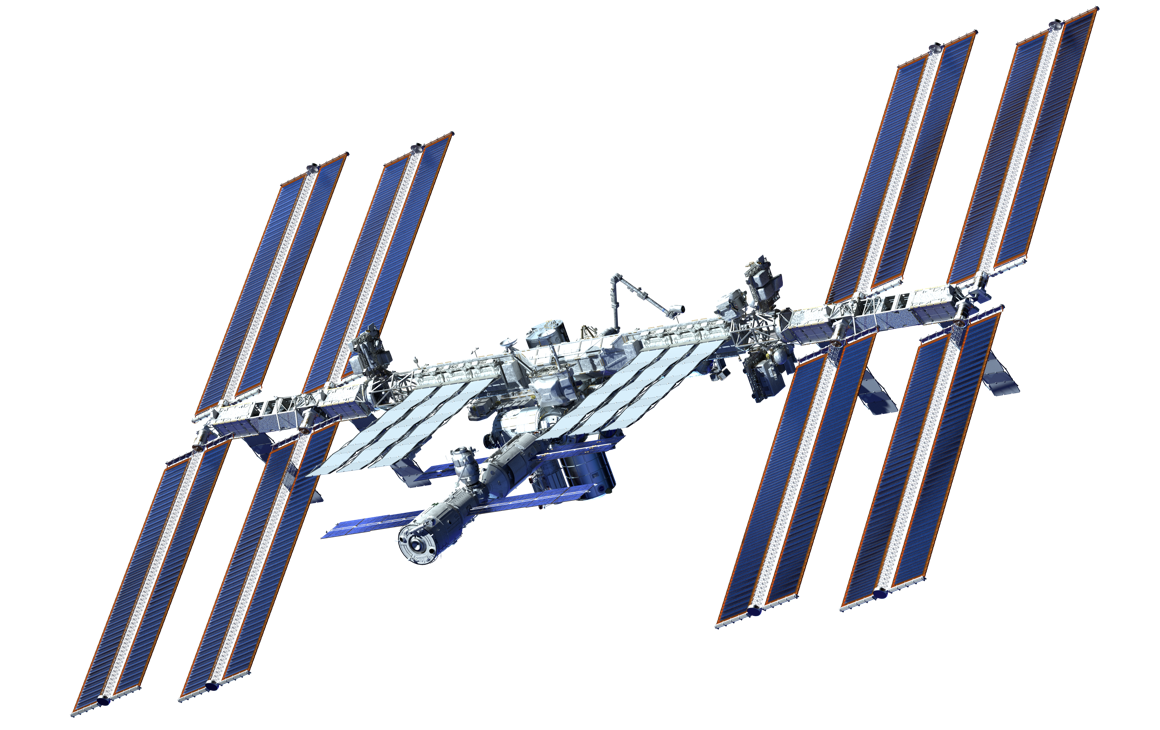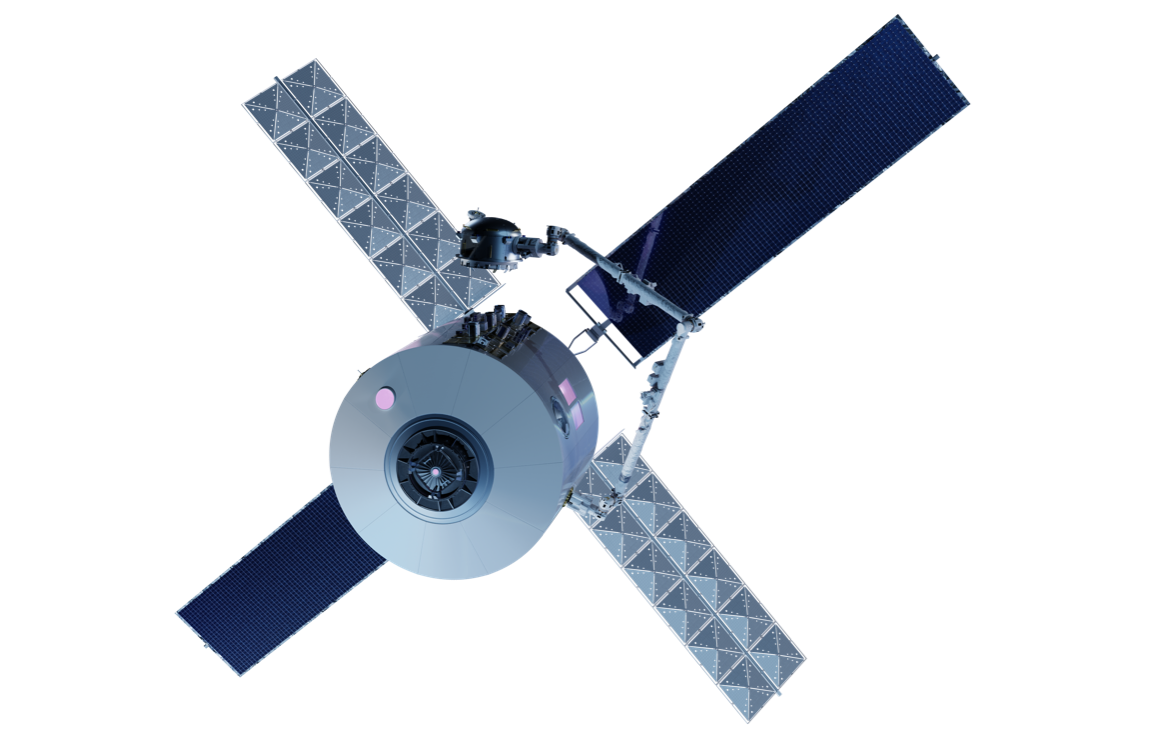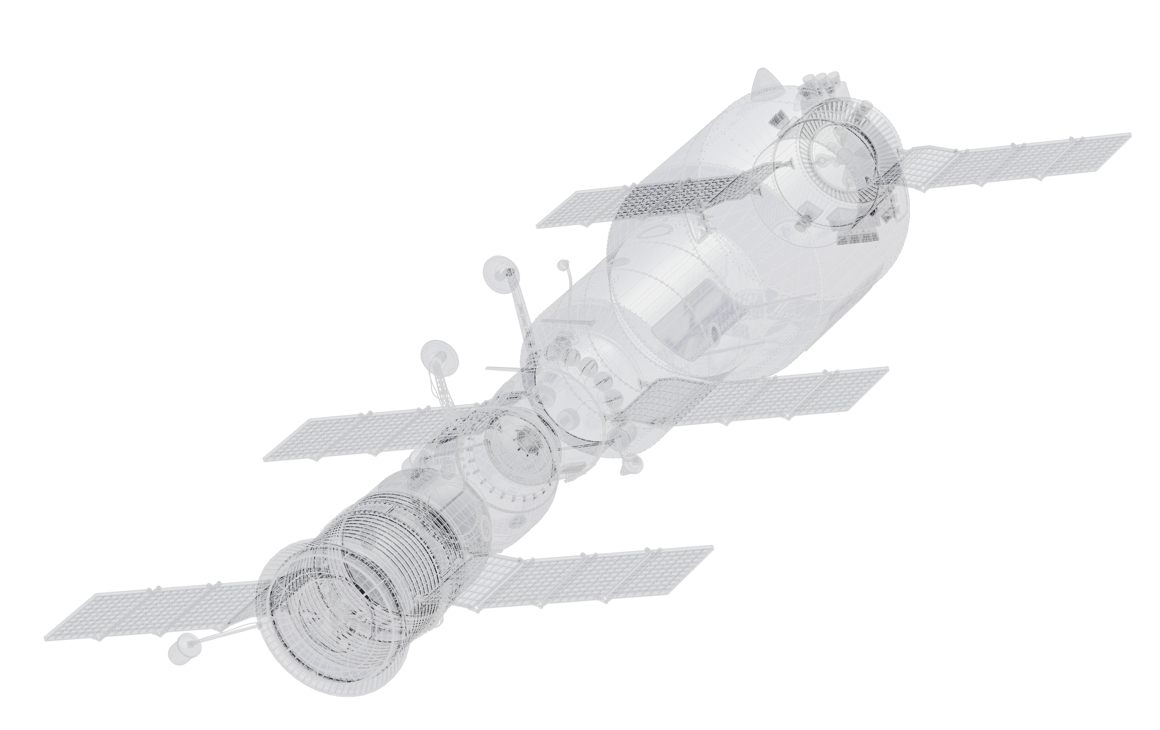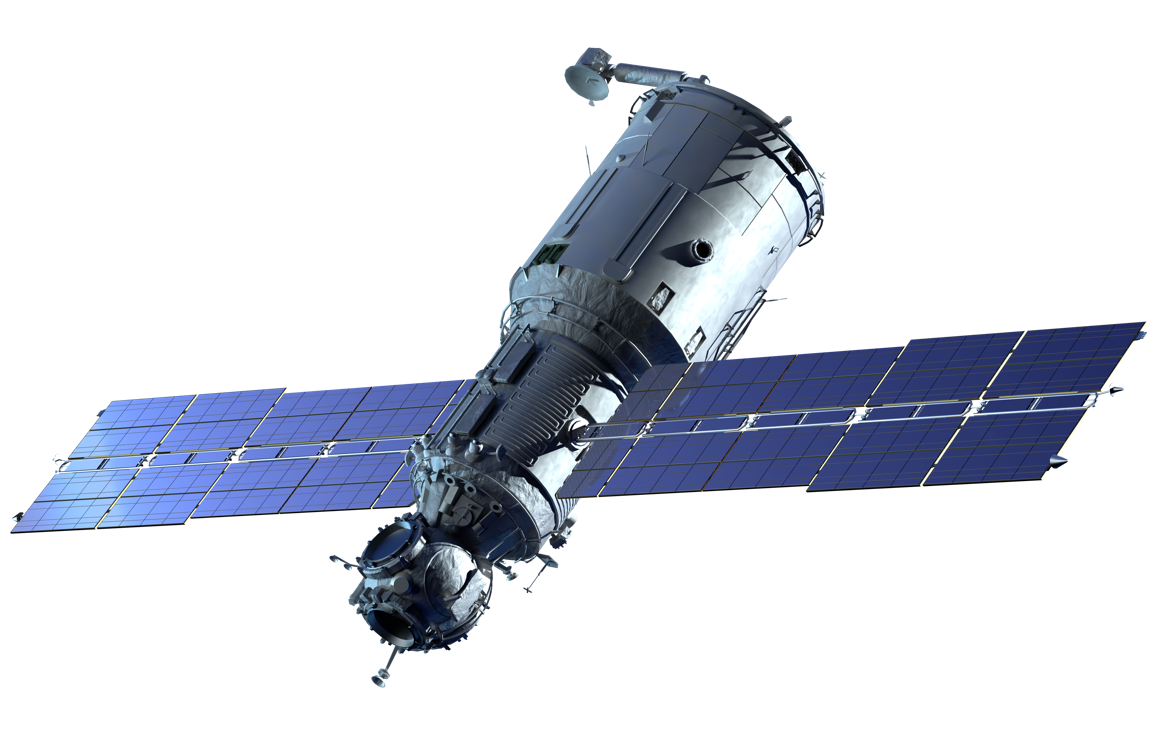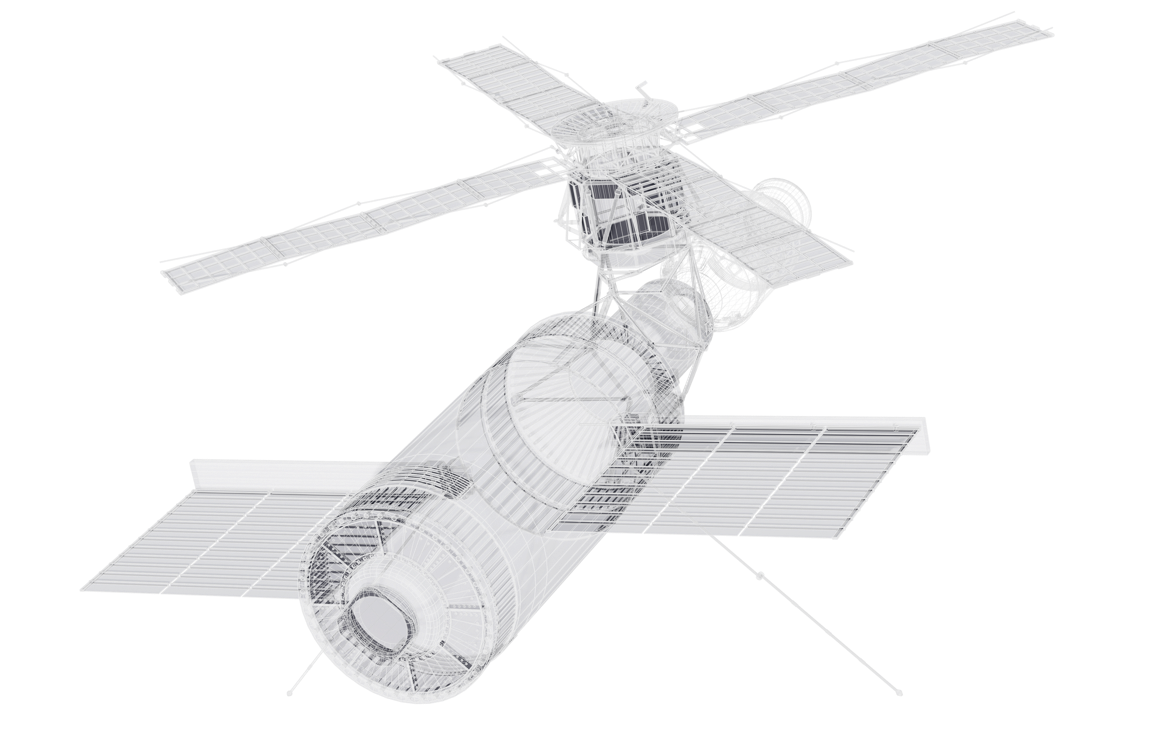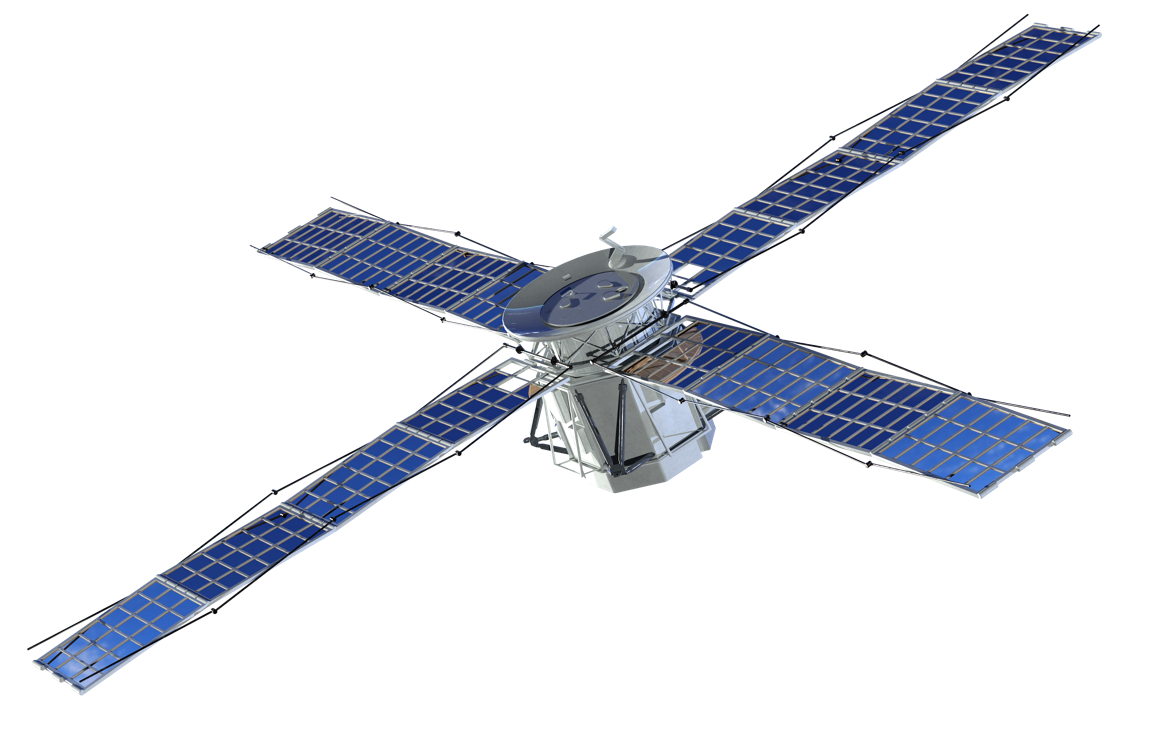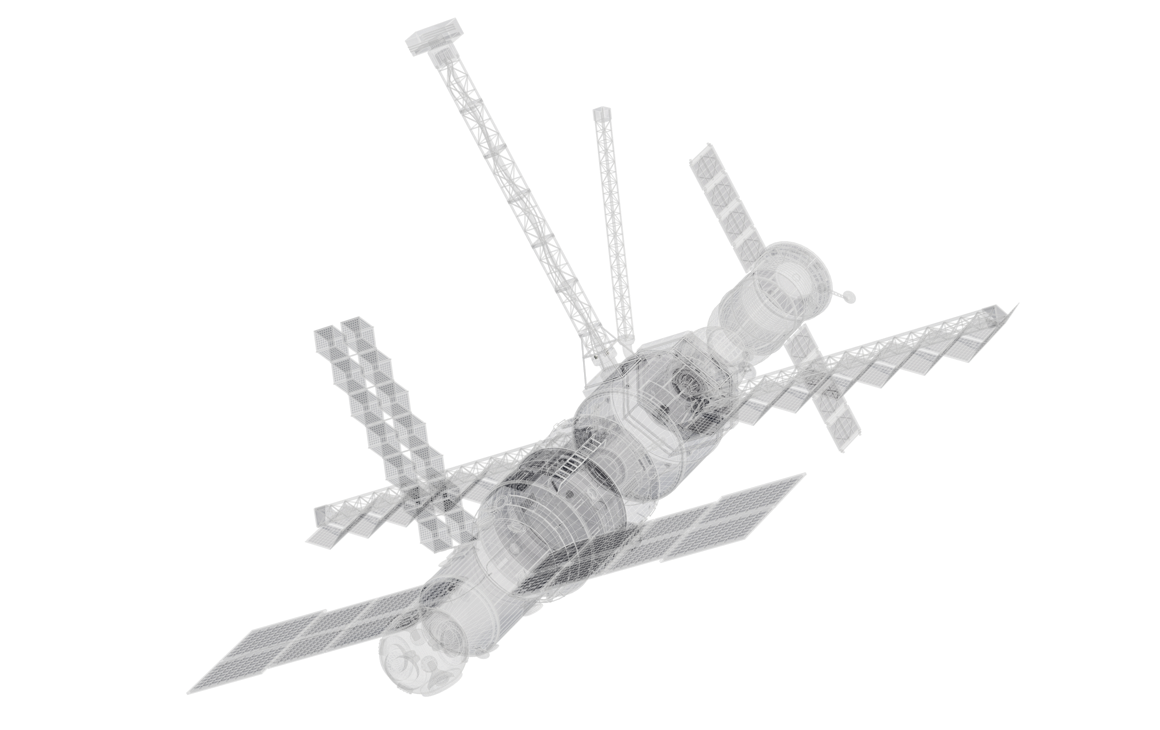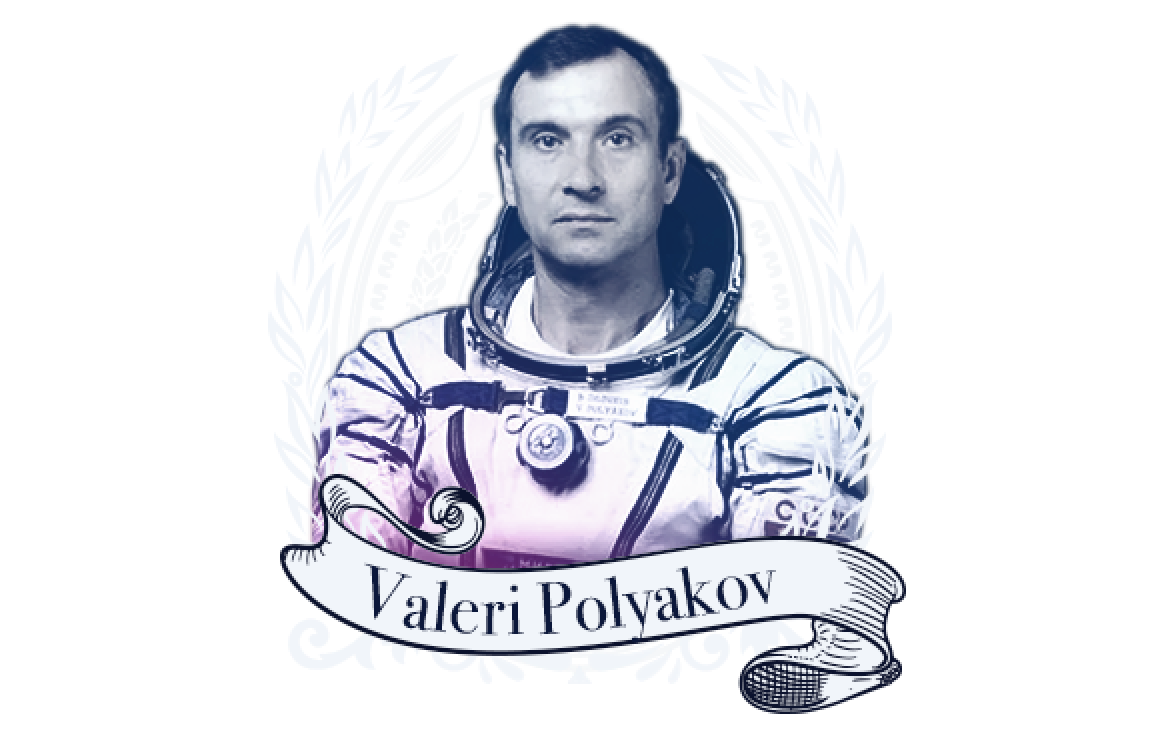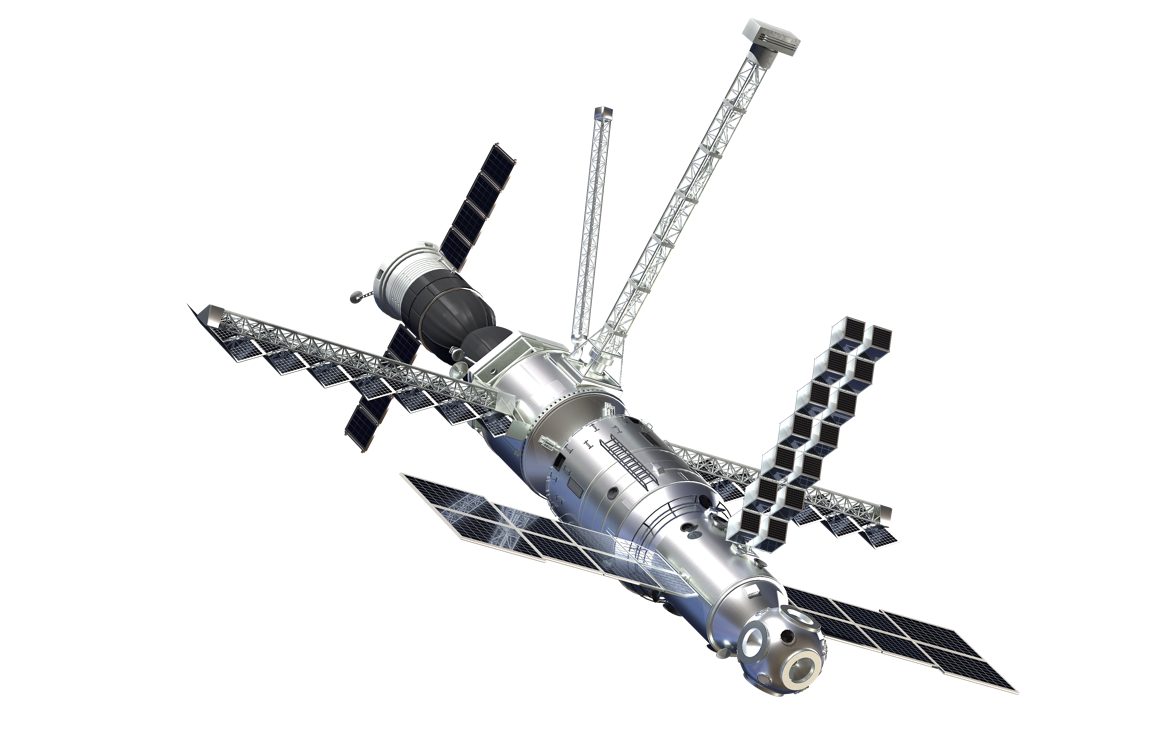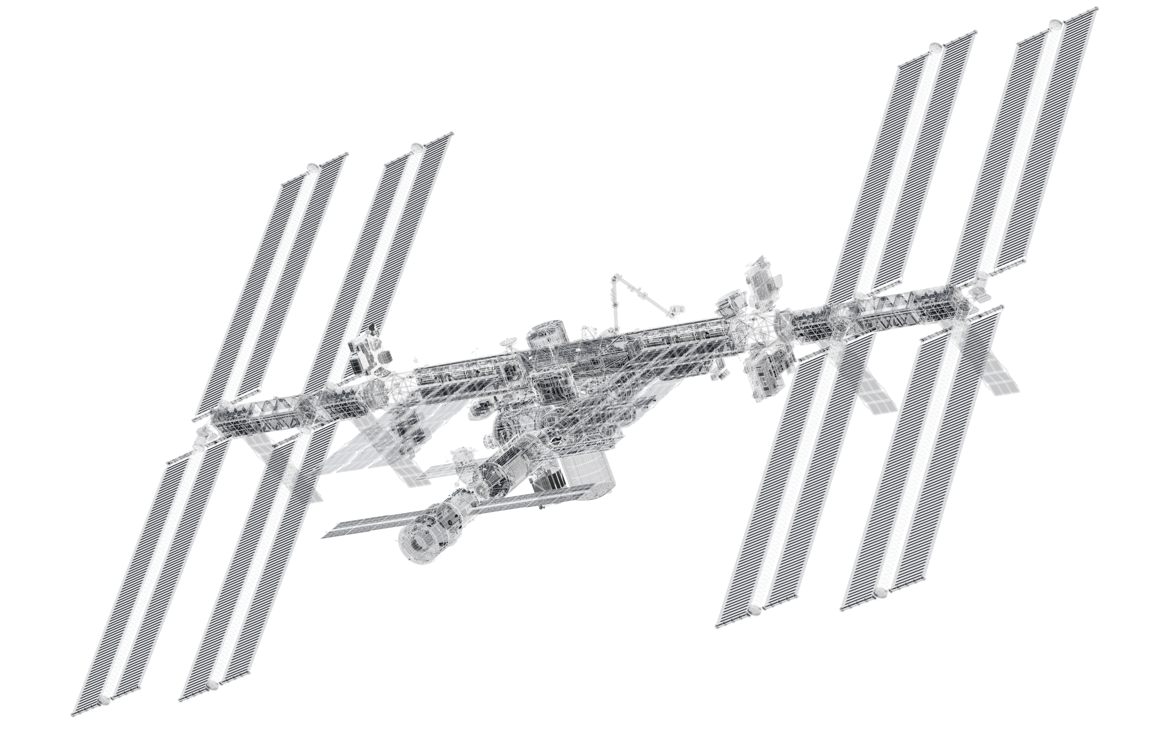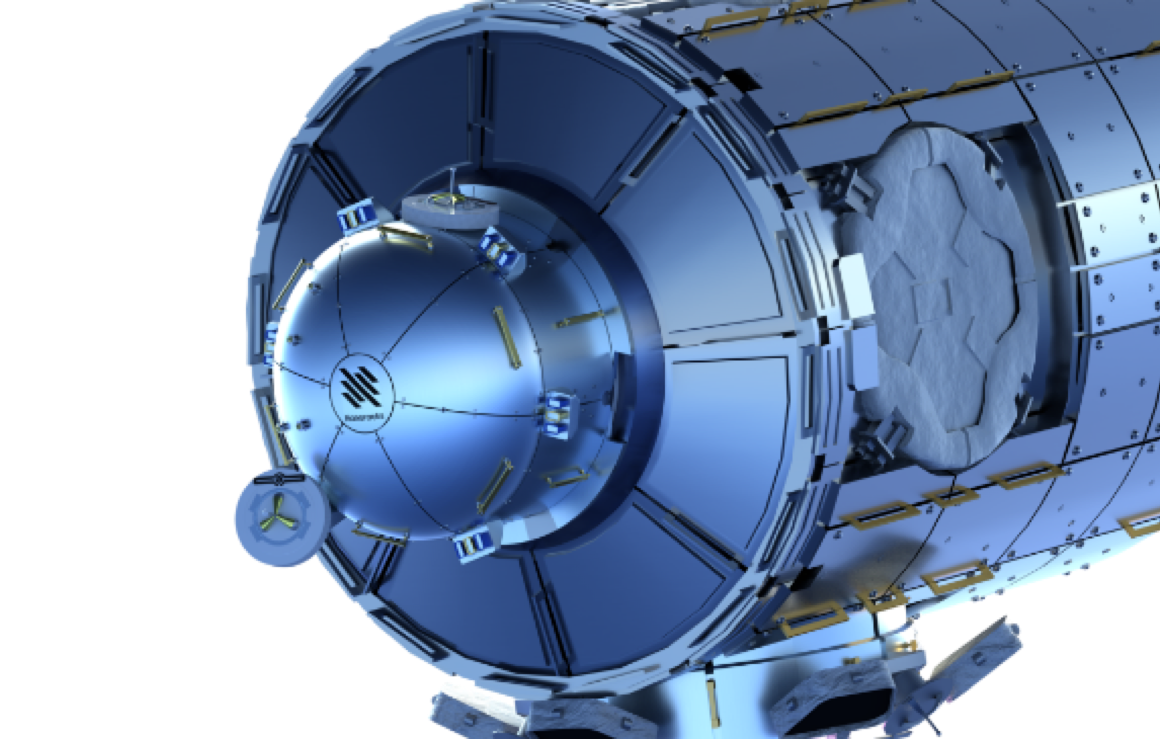Built by the Soviet Union at the height of the Cold War, Salyut 1 was the world’s first space station. Two astronaut crews visited the Salyut, but the first (Soyuz 10), had issues docking and had to abort. The second (Soyuz 11), docked for 23 days—the longest continuous time humans had ever lived on orbit.
Skylab was the first U.S. Space Station and was built from the third-stage of a Saturn-V moon rocket. Skylab hosted three crews over its nine months on orbit. Skylab’s solar arrays were damaged during launch, and for the first time in history, the crew had to put on their spacesuits, go on a spacewalk, free the jammed solar panels, and save Skylab.
Mir (‘Peace’ in Russian), was the world’s first modular space station—meaning it could be assembled like Lego blocks in space. Unlike Skylab or Salyut, Mir was crewed 24/7 —astronauts would take shifts, but someone was always onboard. Eventually, Mir was leased by private company MirCorp, making it the first-ever privately operated space station.
Continuously crewed since 2000, the ISS is a collaboration between the United States, the European Space Agency, Canada, Japan, & Russia. About the size of a football field from end-to-end, the ISS has hosted over 260 astronauts from over 20 countries, including multiple space tourists.
Read MoreContinuously crewed since 2000, the ISS is a collaboration between the United States, the European Space Agency, Canada, Japan, & Russia. About the size of a football field from end-to-end, the ISS has hosted over 260 astronauts from over 20 countries, including multiple space tourists.
At any given time, there are six or seven astronauts onboard performing hundreds of experiments across the fields of life science, human health, materials, and astronomical observation. Research conducted aboard the ISS directly impacts everyday life on Earth, including research into Alzheimer’s, Parkinson’s, cancer, and heart disease; new water purification techniques; and even insights into drought-resistance for staple crops.
Read Less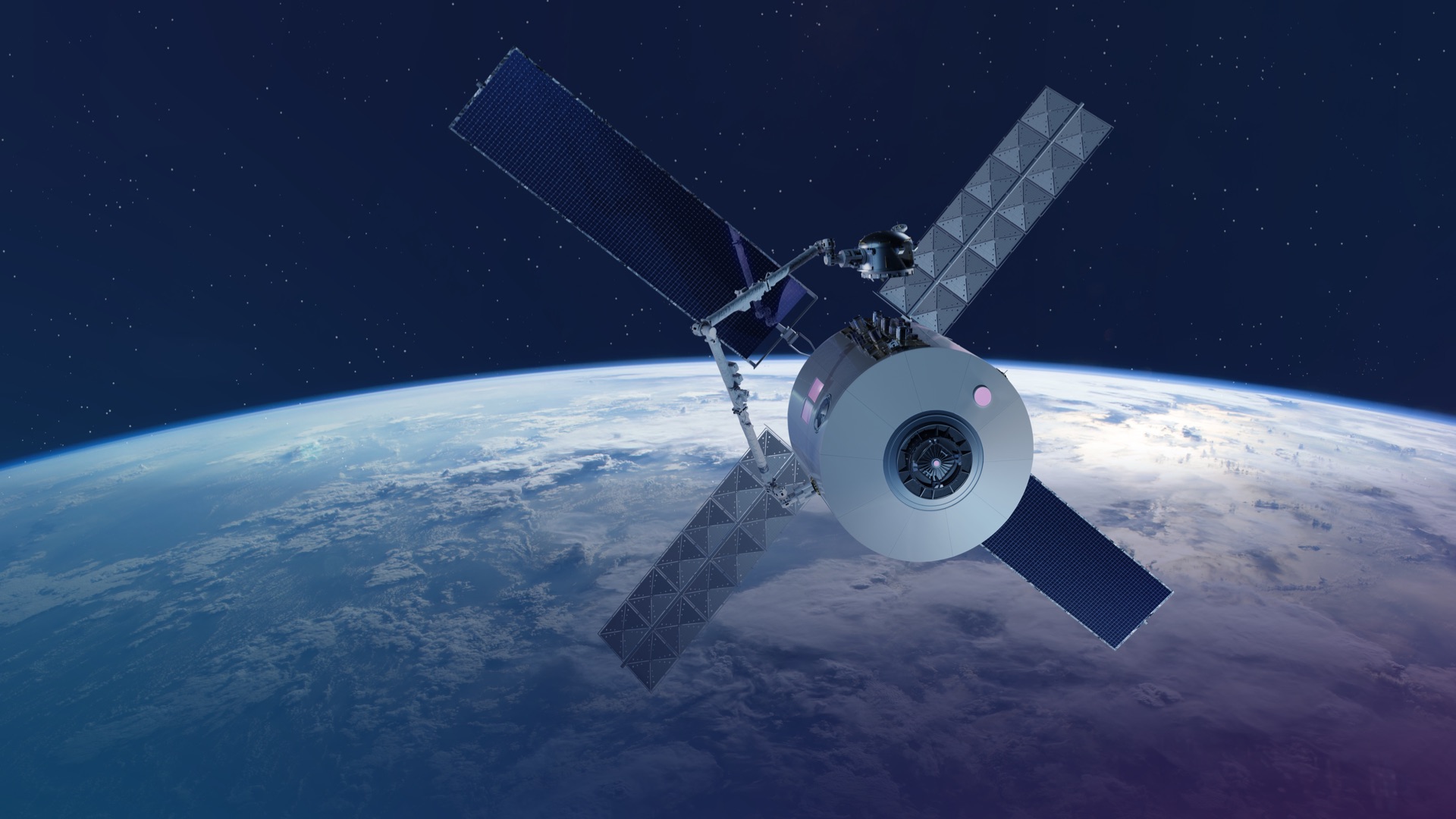
In July 2023, Voyager Space and Airbus announced an agreement paving the way for a transatlantic joint venture to develop, build, and operate Starlab, a commercial space station planned to replace the International Space Station. The US-led joint venture will bring together world-class leaders in the space domain. In December 2021, Voyager Space was awarded a $160m public-private partnership contract from NASA to design Starlab as part of the agency’s Commercial Destinations Free Flyer program.
